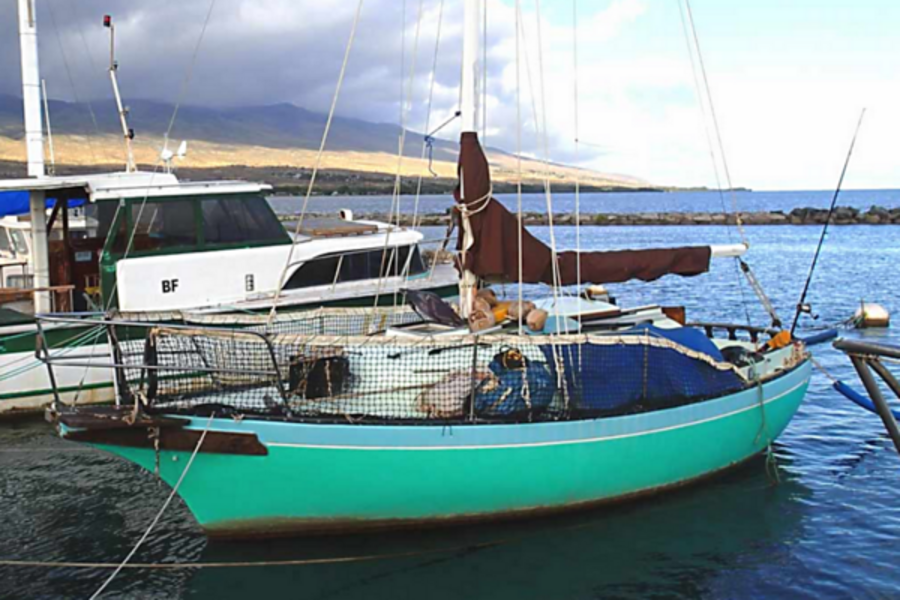Boater rescued off Hawaii after 12 days at sea: But how about 47 days, or 133?
Loading...
For Zakary Ingraham, it was "the best Christmas present ever.”
He’d just gotten a call from the US Coast Guard. His father, Ron Ingraham, had been found adrift in his 25-foot fishing boat, the Malia, 64 miles off the coast of Hawaii, weak, hungry, and dehydrated.
A week earlier, the Coast Guard had suspended its search. Fifty-nine sorties over 12,000 square miles had been fruitless. Then on Tuesday came the good news.
Coast Guard watchstanders in Honolulu had received a short Mayday call from the Malia at 7:55 a.m. that morning. They issued an urgent marine information broadcast, and the guided-missile destroyer USS Paul Hamilton, which was approximately 14 miles away, arrived on scene with Malia about an hour later.
Crew aboard the destroyer reported that Mr. Ingraham was weak and dehydrated but uninjured. They provided food and water and began towing the Malia to shore.
"A lot of joy around the command center to know that ... he's alive and he's going to be OK," Coast Guard Lt. Scott Carr told the NBC affiliate in Honolulu.
Zakary Ingraham hadn’t given up hope.
"He's always been tough," he said of his father. "When I was a kid, he caught a 916-pound marlin by himself – hooked it to the side of the ship and everything. That's the kind of man he is."
The reunion between the two will have been a long time coming. The younger Ingraham, who lives in Missouri, says he hasn’t seen his father in 20 years.
"I've been trying to find my dad for years, but I'm not good with computers, and I figured, he just doesn't have a cellphone," Ingraham told NBC. "He doesn't have a house. He lives on his boat."
Twelve days adrift at sea – in a boat that’s lost power and begun to take on water – is a long time, even if a sailor doesn’t yet know that the Coast Guard has done its best to find you but ended its search unsuccessfully.
But it’s by no means the longest such story.
Eddie Rickenbacker, a World War I fighter ace and Medal of Honor winner, spent 24 days adrift in the Pacific.
Poon Lim, a steward on a British merchant ship sunk by a German U-boat in the South Atlantic during World War II, survived on an eight-foot-square wooden raft, living on rainwater and raw fish. He was rescued after 133 days by Brazilian fishermen.
In 2005-06, Mexican fishermen Lucio Rendón, Salvador Ordóñez, and Jesús Eduardo Vidaña spent nine months drifting westward in the Pacific, finally rescued by a Taiwanese vessel 200 miles from the Marshall Islands. They had survived by collecting rainwater and eating raw fish, seagulls, and sea turtles.
Louis Zamperini’s story may be the most harrowing.
He was the bombardier on a B-24 during World War II. When his plane went down in the Pacific, Lieutenant Zamperini and two of the other surviving crew members (one of whom later died) drifted for 47 days, fending off shark attacks and occasionally being strafed by Japanese aircraft.
Drifting to the Marshall Islands, they were immediately captured, spending the rest of the war as POWs under horrific conditions.
Zamperini’s story is told in Laura Hillenbrand’s bestseller “Unbroken: A World War II Story of Survival, Resilience, and Redemption,” to be released in the United States as a Hollywood film on Christmas Day.








